Key Takeaways
1. Kurt Godel: The Intellectual Exile and Ardent Platonist
I was a conceptual and mathematical realist since about 1925.
Early sense of exile. Born in what became Czechoslovakia, Godel felt like an Austrian exile from a young age, a feeling that deepened when he fled Nazi Europe for Princeton. This external exile mirrored a profound internal one, driven by his unique intellectual convictions, particularly his unwavering belief in mathematical Platonism.
Platonism as first love. Godel's intellectual life was fundamentally shaped by his early embrace of Platonism, the belief that mathematical objects and truths exist objectively, independent of human thought or formal systems. This conviction, formed during a philosophy course, became the driving force behind his mathematical work, seeking results with broader philosophical implications.
A unique personality. Known for his extreme reticence, solemnity, and distrust of common sense, Godel was a man of intense, rigorously intellectual passions kept scrupulously hidden. His aversion to conflict meant he rarely argued his convictions directly, preferring his mathematical proofs to speak for him, a preference that ironically contributed to misunderstandings of his work.
2. Vienna's Intellectual Crucible: Positivism's Reign and Wittgenstein's Shadow
"Everything," it proclaimed, "is accessible to man. Man is the measure of all things."
A city of intense ideas. Interwar Vienna was a vibrant, if decaying, intellectual hub, where thinkers across disciplines engaged in a collective conversation about dismantling old traditions and building new foundations. This atmosphere fostered movements like logical positivism, which sought to cleanse intellectual life using the methodology of science.
Logical Positivism's tenets. The Vienna Circle, centered around Moritz Schlick, championed logical positivism, asserting that only empirically verifiable statements or logical tautologies are meaningful. Metaphysical claims, including those about objective abstract entities like numbers or moral values, were dismissed as meaningless "pseudo-propositions."
- Verificationist criterion of meaning: Meaning is tied to empirical verifiability.
- Mathematics as syntax: Mathematical truths are seen as analogous to logical tautologies, devoid of descriptive content, deriving truth solely from formal rules.
Wittgenstein's complex influence. Though not a member, Ludwig Wittgenstein's Tractatus Logico-Philosophicus profoundly influenced the Circle, who interpreted it as supporting their anti-metaphysical stance and syntactic view of logic/mathematics. However, Wittgenstein himself believed in an "unsayable" realm (ethics, mysticism) beyond language, a point the positivists largely ignored, leading to his frustration and Godel's later resentment of the philosopher's perceived influence.
3. Hilbert's Grand Program: Formalism's Quest for Mathematical Certainty
"Mathematics," wrote Hilbert, "is a game played according to certain simple rules with meaningless marks on paper."
The crisis of intuition. Nineteenth-century discoveries like non-Euclidean geometry and set-theoretic paradoxes (e.g., Russell's paradox) undermined confidence in mathematical intuition as a reliable foundation. This led to a push to eliminate intuition entirely by formalizing mathematics.
Formalism's goal. David Hilbert, the era's leading mathematician, championed formalism, viewing mathematics as the manipulation of meaningless symbols according to stipulated rules within a formal system. The goal was to establish mathematical certainty not through intuitive truth, but through the rigorous, mechanical application of rules.
The Hilbert Program. Hilbert proposed formalizing all of mathematics, starting with arithmetic, and then proving the consistency of these formal systems using only "finitary" (intuitively certain, non-infinite) methods. His second problem, proving the consistency of arithmetic, became the crucial step for this program, aiming to show that mathematics was a consistent, complete, and decidable formal game.
4. The Proof's Core Strategy: Turning Paradox into Revelation
Godel was able to take the structure of self-referential paradoxicality—the sort of structure that causes our minds to crash when considering "This very sentence is false"—and turn it into an extraordinary proof for one of the most surprising results in the history of mathematics.
Inspiration from paradox. Godel's ingenious proof strategy draws inspiration from self-referential paradoxes like the Liar Paradox ("This sentence is false"). These paradoxes highlight the problems that arise when a statement refers to itself, leading to contradictions.
Constructing a self-referential statement. The core idea is to construct a mathematical statement, let's call it G, within a formal system of arithmetic that says about itself that it is not provable within that system. This is achieved through a clever encoding scheme.
The logical twist. If G were provable within the system, then what G says (that it's unprovable) would be false. But if G is provable in a consistent system, it must be true. This leads to a contradiction (G is both true and false). Therefore, assuming the system is consistent, G cannot be provable within the system.
Truth vs. Provability. Since G states that it is unprovable, and we've just shown (outside the system) that it is unprovable (assuming consistency), G is true. Thus, G is a statement that is true but unprovable within the formal system, demonstrating its incompleteness.
5. Godel Numbering: Bridging Metamathematics and Arithmetic
Through Godel's inspired contrivances, all of the logical relations that hold between propositions in the formal system become arithmetic relations expressible in the arithmetical language of the system itself.
Encoding the system. A crucial technical step in Godel's proof is Godel numbering, a systematic method for assigning a unique natural number to every symbol, formula (well-formed formula), and sequence of formulas (proof) in the formal system of arithmetic. This turns statements about the formal system (metamathematics) into statements within the system (arithmetic).
Metamathematics as arithmetic. By assigning numbers, properties of formulas (like being a well-formed formula) and relations between them (like one formula following from another by a rule of inference) can be translated into purely arithmetical properties and relations between their corresponding Godel numbers.
- Symbols get numbers (e.g., '0' is 6, '=' is 4).
- Formulas get numbers based on their sequence of symbol numbers.
- Proofs get numbers based on their sequence of formula numbers.
Provability as an arithmetical property. This encoding allows Godel to define an arithmetical property, Pr(x), such that Pr(n) is true if and only if the number n is the Godel number of a provable formula (a theorem) in the system. This property is complex but expressible using the language of arithmetic itself.
Self-reference achieved. Using the diagonal lemma (or a similar construction), Godel creates a formula G whose Godel number, g, has the property that G is equivalent to the statement "g does not have the property Pr." In essence, G is an arithmetical statement that translates to the metamathematical statement "This formula (whose number is g) is not provable."
6. The First Incompleteness Theorem: Truth Transcends Formal Proof
One can (assuming the [formal] consistency of classical mathematics) even give examples of propositions (and indeed of such a type as Goldbach and Fermat) which are really contextually [materially] true but improvable in the formal system of classical mathematics.
The core result. Godel's first incompleteness theorem states that for any consistent formal system that is powerful enough to express basic arithmetic, there exists a statement within that system that is true but cannot be proven within the system. Such a statement is called "undecidable" within that system.
The Godel sentence G. The proof constructs this undecidable statement, G, which is an arithmetical proposition. As shown by the proof's strategy, G is true if and only if it is not provable within the system.
Why G is true and unprovable.
- If G were provable, then the system would prove a false statement (since G says it's unprovable). In a consistent system, this is impossible. So, G is not provable.
- Since G states that it is not provable, and we've just established (outside the system) that it is indeed not provable, G is true.
Incompleteness demonstrated. The existence of G shows that the formal system is incomplete: there's a truth it cannot reach through its own rules of proof. This applies to any formal system containing arithmetic, no matter how many axioms are added, as a new undecidable statement can always be constructed.
7. The Second Incompleteness Theorem: Consistency Cannot Be Proved Internally
A corollary to the theorem is that the consistency of a formal system adequate for number theory cannot be proved within the system.
A direct consequence. Godel's second incompleteness theorem is a corollary of the first. It states that a consistent formal system powerful enough to formalize its own metamathematics (like arithmetic) cannot prove its own consistency.
The reasoning. The first theorem showed that if a system S is consistent, then the Godel sentence G is true (and unprovable in S). The statement "S is consistent" can itself be translated into an arithmetical statement within S, let's call it Con(S).
The unprovable consistency. If S could prove Con(S), then S could prove that G is true (since G's truth follows from S's consistency). But G is unprovable in S. This contradiction implies that S cannot prove Con(S).
Limits of self-validation. This means that the consistency of arithmetic (or any sufficiently strong system) cannot be formally established using only the methods available within arithmetic itself. Any proof of consistency must appeal to methods or assumptions that go beyond the system being proved consistent.
8. Hilbert's Program Undermined: The Limits of Formal Systems
Godel had proved that Hilbert's second problem could not be solved: there would never be a finitary formal proof of the consistency of the axioms of arithmetic within the system of arithmetic.
Formalism's fatal blow. Godel's incompleteness theorems delivered a devastating blow to Hilbert's program, which aimed to secure the foundations of mathematics by formalizing it and proving its consistency using finitary methods within the system.
Incompleteness of formal systems. The first theorem showed that formal systems are inherently incomplete; they cannot capture all mathematical truths, contradicting the hope that provability within the system equates to truth.
Unprovable consistency. The second theorem directly refuted Hilbert's central goal: proving the consistency of arithmetic within the system. This meant the formalist project of establishing mathematical certainty solely through internal, mechanical rules was impossible.
Intuition's unavoidable role. Godel's results implied that mathematical intuition, which formalists sought to eliminate, remains essential. Proving consistency requires stepping outside the formal system and appealing to intuitions (like the reliability of the natural numbers as a model) that cannot be fully formalized.
9. Wittgenstein's Resistance: Bypassing the Unspeakable Proof
As far as my theorems about undecidable propositions are concerned, it is indeed clear from the passage that you cite that Wittgenstein did not understand it (or that he pretended not to understand it).
A clash of philosophies. Ludwig Wittgenstein, particularly in his later work, viewed mathematics as a collection of language-games governed by rules, where truth is determined by use within the game, not by correspondence to an external reality. This stood in stark opposition to Godel's Platonism and his theorems' implications.
Dismissal as "logical conjuring trick". Wittgenstein famously dismissed Godel's theorems as mere "logische Kunststucken" (logical conjuring tricks), arguing that a contradiction or an undecidable statement in a formal system simply indicates a boundary of that particular language-game, not a profound truth about mathematical reality or the limits of formalization.
Refusal to engage. Wittgenstein's aim was to "bypass" Godel's proof, refusing to accept its metamathematical significance. He believed philosophical problems arose from linguistic confusion, not from deep truths revealed by logic, and thus Godel's result, which seemed to reveal deep truths about the limits of formal systems, had to be misunderstood or irrelevant.
Godel's exasperation. Godel was deeply irked by Wittgenstein's dismissal and the continued misinterpretation of his work, particularly by those influenced by the Vienna Circle and Wittgenstein, who saw his theorems as supporting their anti-realist views, precisely the opposite of Godel's intent.
10. Implications for the Mind: Are Humans More Than Machines?
"Either the human mind surpasses all machines (to be more precise it can decide more number theoretical questions than any machine) or else there exist number theoretical questions undecidable for the human mind."
The mind-machine debate. Godel's first incompleteness theorem has been interpreted by some, notably philosopher John Lucas and mathematician Roger Penrose, as demonstrating that the human mind cannot be a mere computer or formal system.
The argument for non-mechanism. The reasoning is that a computer, being a formal system, is limited by Godel's theorem; it cannot prove the truth of its own Godel sentence G. However, a human mind, understanding the proof, can see that G is true. Therefore, the human mind can grasp truths that no formal system (and thus no computer) can, implying the mind is not a formal system.
Godel's cautious disjunction. Godel himself was more circumspect, suggesting his theorem proved a disjunction: either minds surpass machines in deciding number theory questions, or there are number theory questions undecidable for the human mind. The second possibility allows for the mind to be a machine, but one potentially subject to its own inherent undecidability or even delusion about its knowledge.
Unprovable transcendence. While Godel leaned towards the view that minds are not machines, his theorem, by showing the limits of formal proof, also makes it impossible to rigorously prove that the human mind transcends all formal systems.
11. Godel's Enduring Platonism: Mathematical Reality Beyond Systems
But despite their remoteness from sense experience, we do have something like a perception also of the objects of set theory, as is seen from the fact that axioms force themselves upon us as being true.
Vindication of realism. For Godel, the incompleteness theorems were not a sign of the limits of mathematical truth or human knowledge, but rather a powerful argument for mathematical Platonism. The existence of true but unprovable statements implied that mathematical truth is not merely a product of formal systems.
Truth independent of proof. The fact that a statement like G can be true even if unprovable within a system suggests that mathematical truth exists independently of our ability to prove it formally. This aligns with the Platonist view that mathematical objects and their properties constitute a reality that our formal systems attempt, imperfectly, to describe.
Mathematical intuition. Godel argued that our ability to recognize the truth of G (and other undecidable statements) relies on mathematical intuition, a form of "perception" of abstract reality analogous to sense perception of the physical world. This intuition allows us to grasp truths that transcend the mechanical rules of formal systems.
Beyond formalism. Godel's work showed that formalism's goal of replacing intuition with pure syntax was unattainable. Mathematical knowledge requires engagement with an objective reality that cannot be fully captured by any finite set of rules or axioms.
12. A Life of Paradox: Genius, Isolation, and Delusion
The death of Einstein was of course a great shock to me, since I had not expected it at all.
Friendship with Einstein. Godel's close friendship with Albert Einstein in Princeton provided a rare source of intellectual and personal connection. Despite their dissimilar personalities, they shared a deep commitment to objective reality and felt intellectually isolated from prevailing subjectivist trends in their fields.
Deepening isolation. After Einstein's death, Godel's sense of isolation intensified. His intellectual disagreements with colleagues, his rigid adherence to authority (even when it seemed irrational), and his increasing paranoia led to his exclusion from departmental discussions and further withdrawal.
Paranoia and self-starvation. Godel's lifelong hypochondria and anxiety escalated into severe paranoia in his later years, marked by fears of poisoning and conspiracy. This ultimately led to his tragic death from self-starvation, a chilling parallel to the logical paradoxes he mastered, where a system's internal rules lead to its own collapse.
An incomplete life. Despite his monumental intellectual achievements, Godel felt his philosophical work was incomplete, awaiting an "epiphany" that never came. His life, marked by profound insights into the limits of formal systems, was tragically mirrored by the limits of his own mind's ability to maintain a consistent, non-paradoxical view of the world and his place in it.
Last updated:
Review Summary
Incompleteness explores Kurt Gödel's life and his famous incompleteness theorems. Reviewers praised Goldstein's accessible explanations of complex mathematical concepts and her engaging writing style. Many found the historical and philosophical context illuminating, though some felt the focus on Wittgenstein was excessive. The book was lauded for its insights into Gödel's personality and his relationships with other intellectuals. While some readers struggled with the technical aspects, most found the book a compelling blend of biography, mathematics, and philosophy.
Similar Books
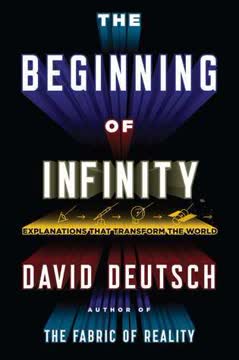
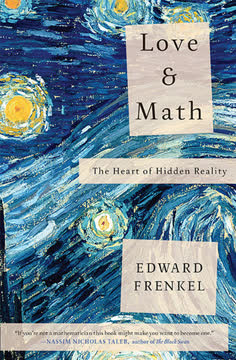

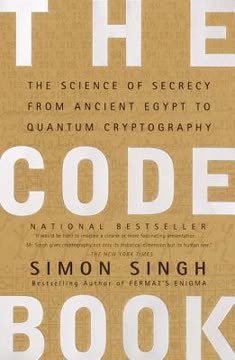
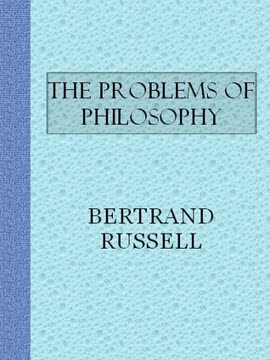
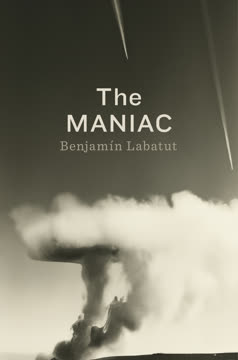
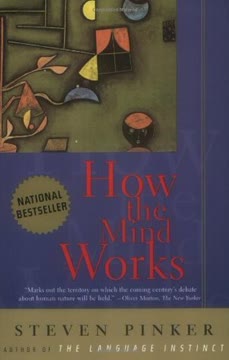
Download PDF
Download EPUB
.epub digital book format is ideal for reading ebooks on phones, tablets, and e-readers.





